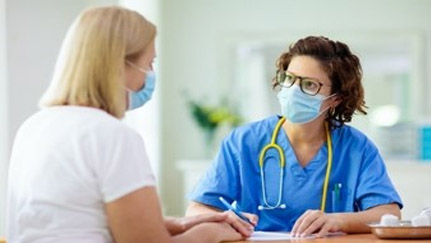Preparing facilities for a possible second wave of COVID-19

Information to consider for successful management of a potential second wave of the coronavirus, based on lessons learned.
Since the beginning of the coronavirus outbreak, officials have been warning about the probability of a second wave, which some say could be worse than the first wave. Whether you believe a second wave of COVID-19 is looming or not, senior living and human services providers should use the lessons learned during the current pandemic and be at a new level of preparedness.
During the first wave of the pandemic, the virus impacted states and regions in different ways. The second wave may likely follow the same pattern, allowing some areas to remain open while other regions need to close for a second time. Now that you have a preparedness plan in place, you should evaluate its effectiveness and monitor the progress of the controls to identify for further modification.
According to a recently published article in Journal of American Medical Directors Association (JAMDA) , it is now time to consolidate the lessons collectively learned during this first wave to reposition senior living and human services communities to improve care of residents, should there be a second wave. In the context of the lessons learned from your most recent experience, the following considerations may prove pivotal to your successful management of a potential second wave of COVID-19:
Administrative Considerations
- Evaluate your current pandemic plan and supplement it as necessary
- Create designated COVID-19-specific and or observation units
- Identify qualified staff to care for residents with coronavirus and have a feasible plan to supplement direct care staff
- Ensure that staff who are assigned to COVID-19 units do not work elsewhere in the facility
- Develop a process for procuring, distributing, and replenishing personal protective equipment (PPE)
- Ensure your Infection Control and Prevention plan meets minimum Centers for Disease Control and Prevention (CDC), Centers for Medicare & Medicaid Services (CMS), and state-specific guidance
- Implement and document widespread testing of staff and residents and have a mechanism for contact tracing
- Ensure that advanced directives are current for all residents
Social Considerations
- Determine how you will implement and monitor visitation when it resumes
- Screen visitors and identify potential hazards such as infected persons
- Ensure staff, residents, and visitors practice physical distancing, proper handwashing and sanitizing, and use face masks or similar barriers as needed
- Design creative ways to keep residents and staff engaged during times of curtailed activities
Communication Considerations
- Strictly adhere to CDC’s guidance for communicating and reporting to health services officials
- Explore and adopt varied means for communicating with residents and their families
- Identify a contact representative for each resident who will serve as the point person for communicating pertinent updates
- Timely communicate changes in public health guidance to staff and residents by means such as resident council and staff meetings, emails, telephone messaging, or on a spot on your website
- Communicate your contingency plan for a possible second wave to staff and residents
Staff Support Considerations
- Have frequent open dialogue with your employees to help diminish anxiety regarding the future of your business and their employment
- Your return to work program for any displaced employee should include education regarding any changed requirements or job functions
- Provide your staff with easy access to the Employee Assistance Program or similar support
- Be flexible with work schedules and offer incentives to your staff to reward them for their willingness to work beyond that which is normally required
Conclusion
Senior living and human services facilities are navigating to a safe return to normal or near normal way of operation during the current COVID-19 pandemic. It is important to remember that there may be a possible second wave in the upcoming months. To assist with preparation for this, companies should consistently review and revise their pandemic safety plan, business continuity plan, return to work program, and the PPE program so they will be better prepared to efficiently navigate a possible second wave.
References
- https://www.mcknights.com/news/nursing-home-doctors-recommend-ways-to-reduce-covid-19-deaths-as-prospect-of-second-wave-looms/
- https://spectrumlocalnews.com/nys/central-ny/ny-state-of-politics/2020/06/11/nursing-homes-prepare-for-a-possible-second-covid-wave
- https://www.businessinsider.com/how-to-prepare-for-a-potential-second-wave-of-coronavirus-2020-5
